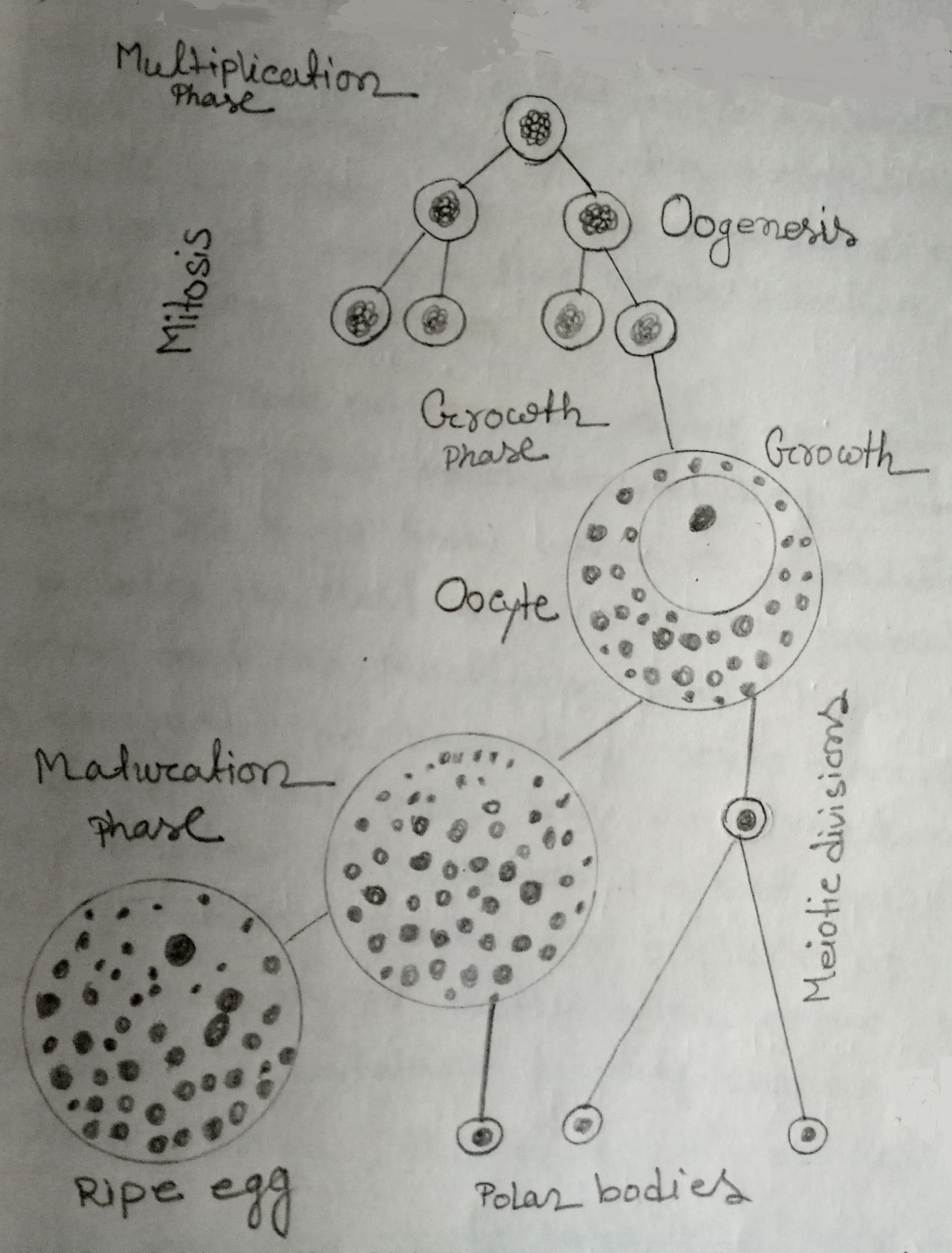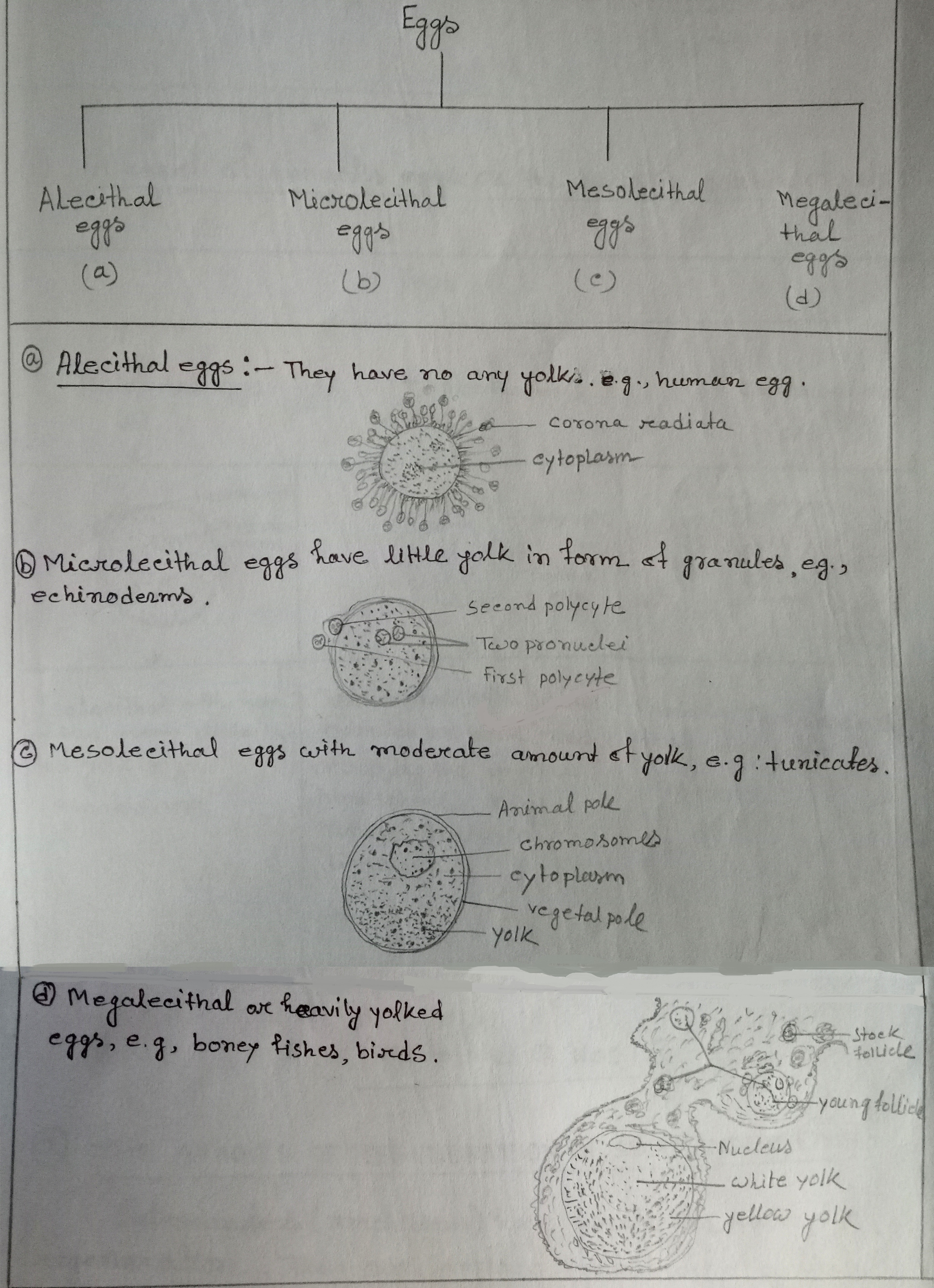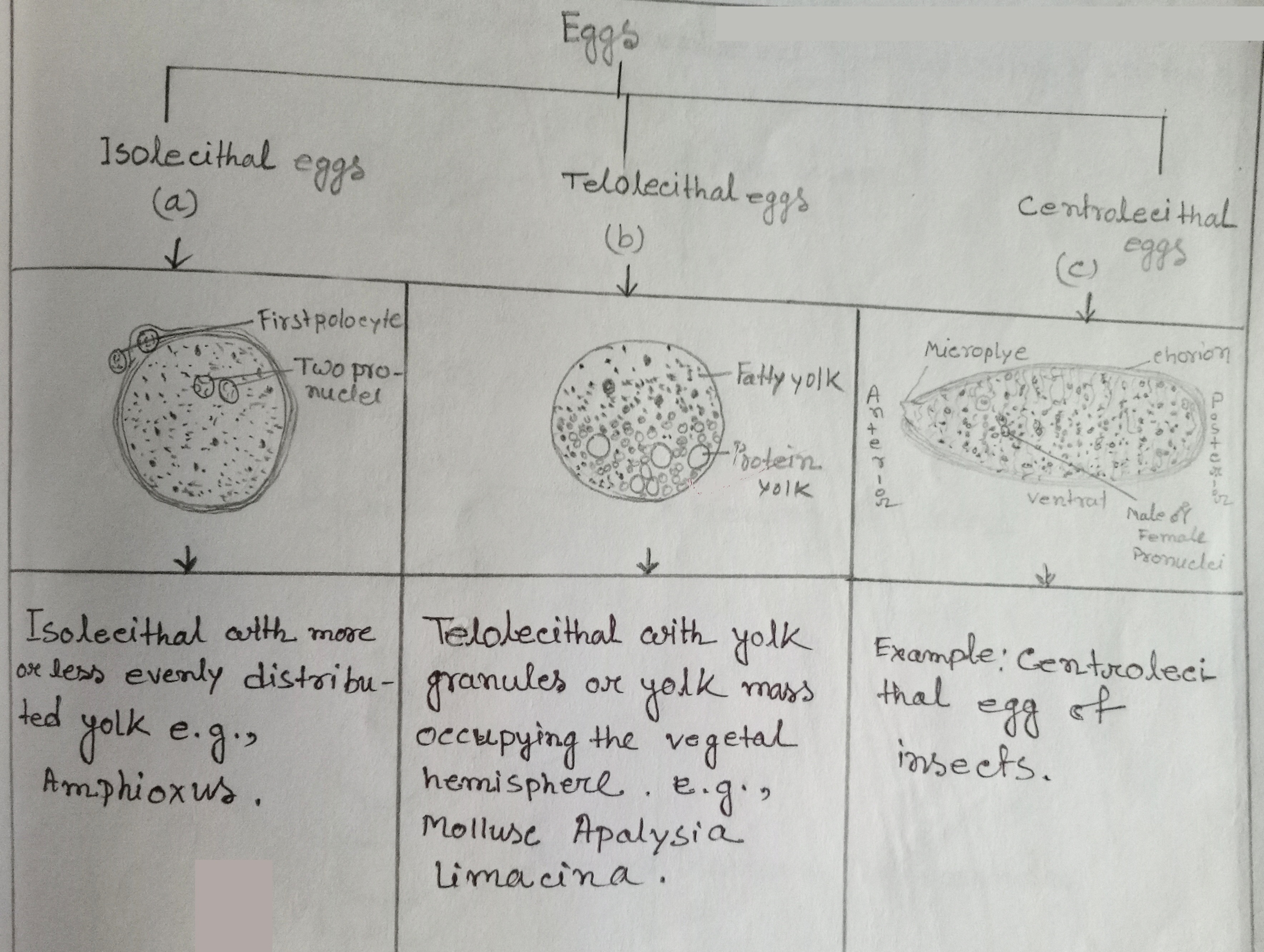(a) Describe the basic process of oogenesis in animals with the help of suitable diagrams

Fig: Stages in Oogenesis
The maturing process in oogenesis leading to the formation of ovum begins before birth but is not completed until after puberty. The primary oocytes form before birth; these get surrounded by a single layer of flattened follicular cells forming the primordial follicle. When these primordial follicles enlarge at puberty the flattened follicular cells become cuboidal & then columnar forming the primary follicle. The primary oocytes begin the process of the first meiotic division before birth & remain in suspended prophase till the reproductive cycle begins at puberty.
The follicular cells surrounding the primary oocyte secrete an inhibiting substance called oocyte maturation inhibitor (OMI) which keeps meiotic division may account to some extent for the large number of errors like nondisjunction, that occur as the mother's age increases.
New primary oocytes are not formed after birth. In contrast, primary spermatocytes keep forming in the male. After puberty 36 to 48 hours before each ovulation, the primary oocytes complete the first meiotic division producing the secondary oocyte & the first polar body. The division of cytoplasm is unequal, the secondary oocyte receives all the cytoplasm while the first polar body receives hardly any & soon degenerates. At ovulation the 2nd meiotic division starts in the secondary oocyte & progresses up to metaphase; it is completed only if fertilization occurs. Again most of the cytoplasm is retained by only one of the two resultant cells the ovum, the other cell or the 2nd polar body degenerates.
The secondary oocyte that is released at ovulation is surrounded by the thin non-cellular envelope, the zona pellucida & a layer of follicular cells called corona radiata. In comparison to other body cells, it is a large cell but to the unaided eye, it appears only as a tiny speck.
(b) Make a chart to classify the eggs in animals on the basis of:
(i) amount of yolk
(ii) location of yolk
(i) A chart to classify the eggs in animals on the basis of amount of yolk

(ii) A chart of animals eggs on the basis of location of yolk
